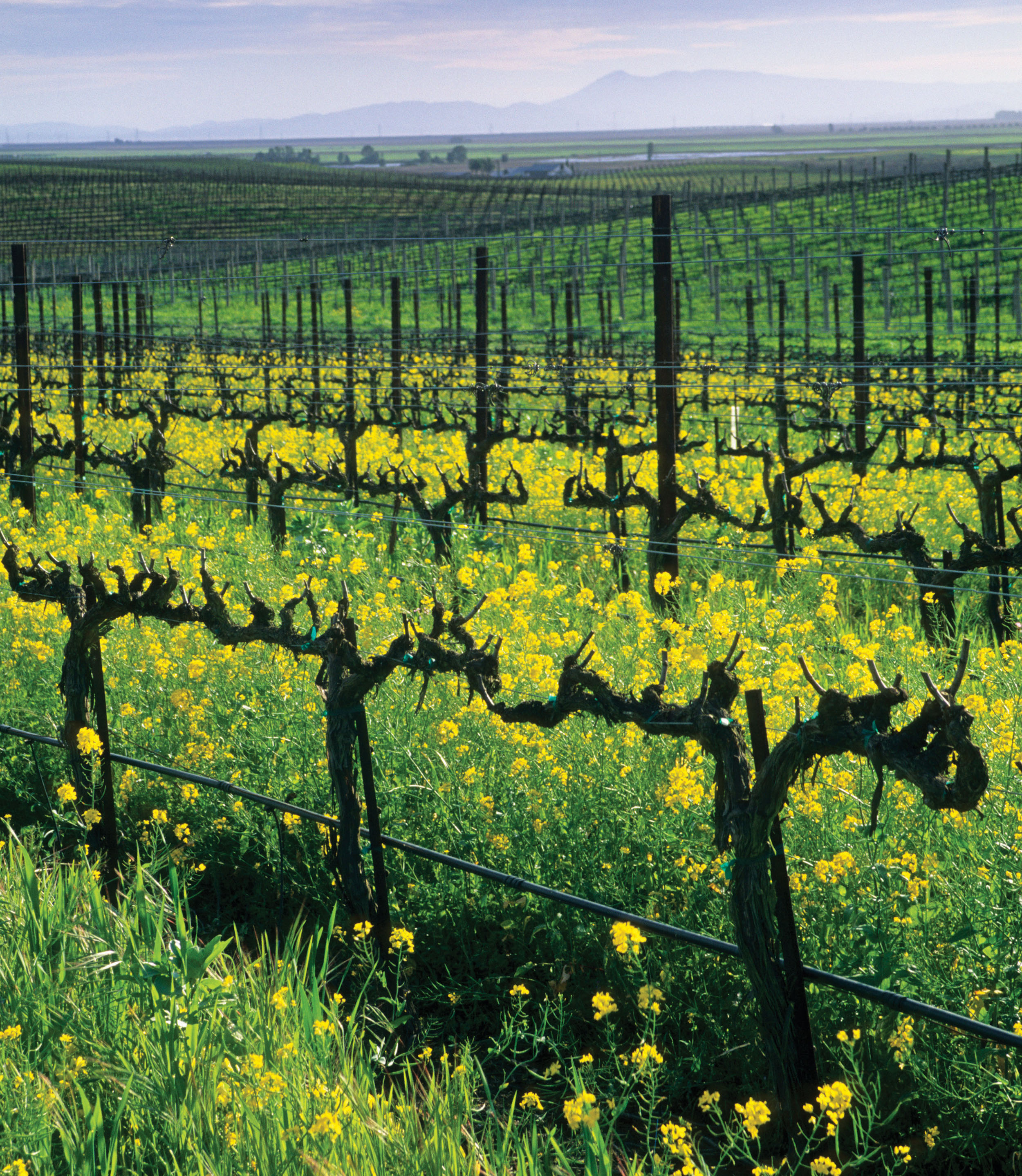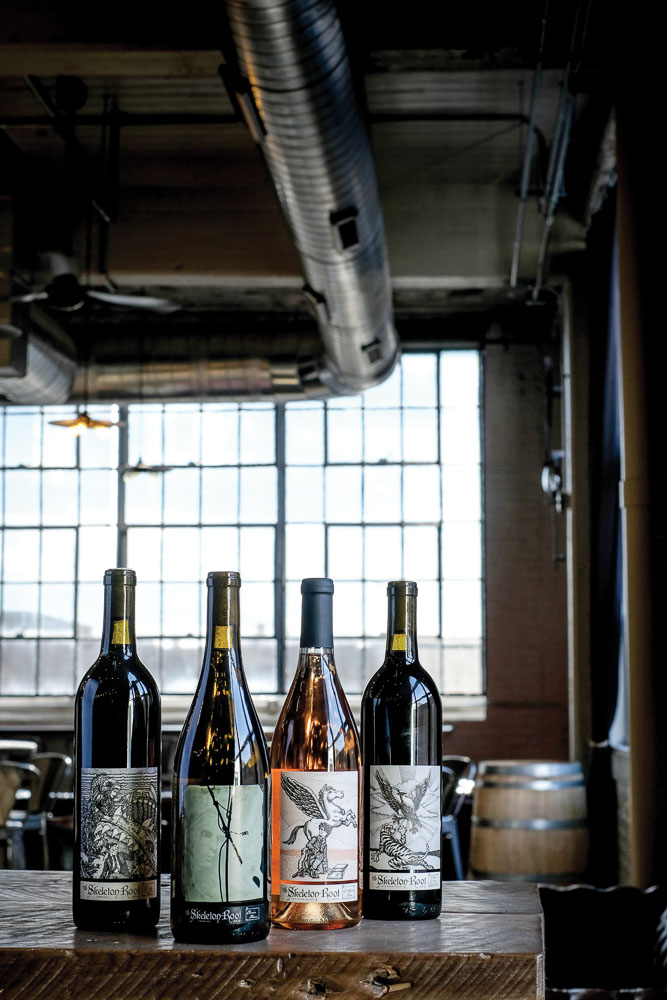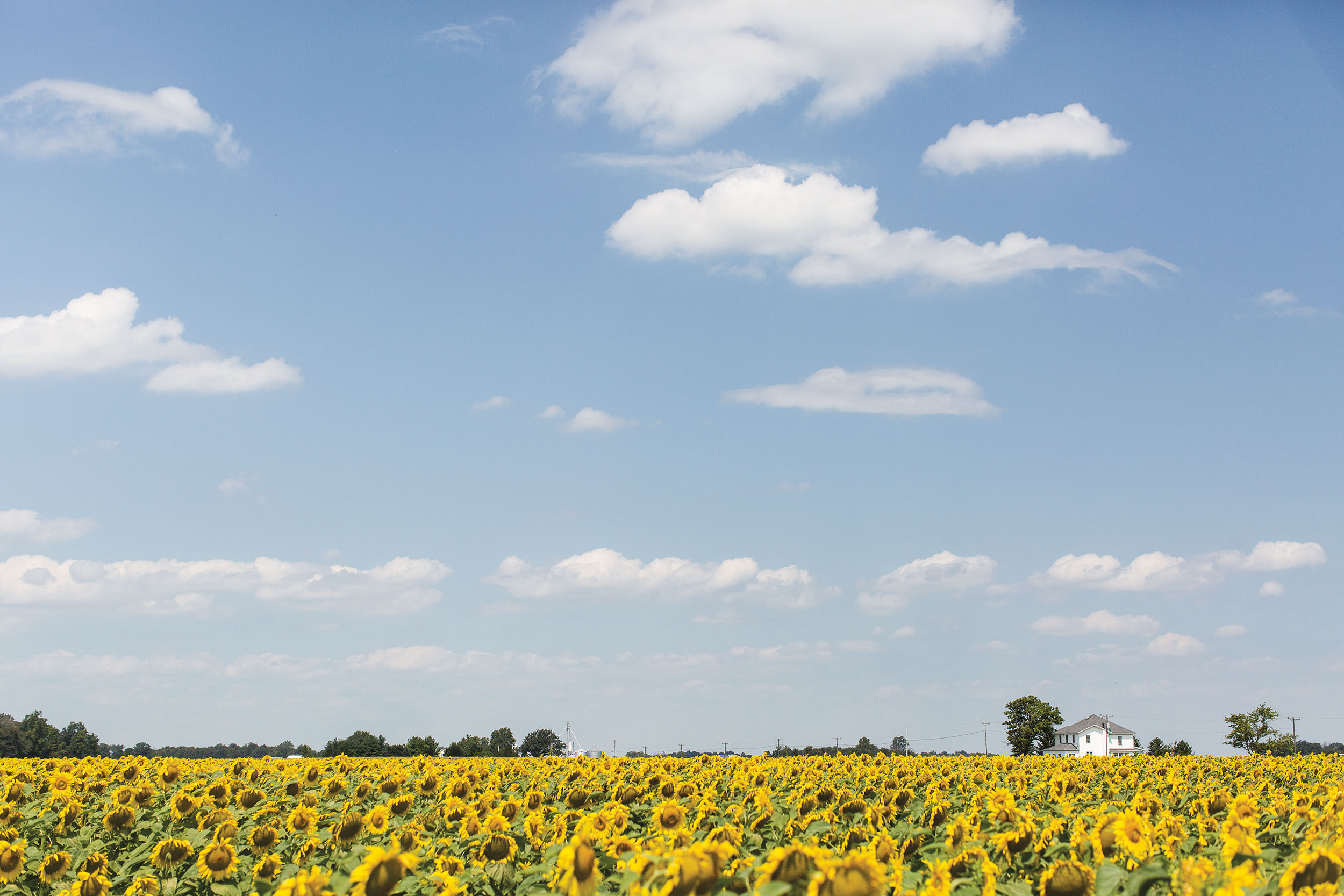Au Naturel

Local wine drinkers are embracing the unfiltered, unfussed, thoroughly unexpected characteristics of natural wines.
If you weren’t looking for it, it would be easy to miss, despite its proximity to the Music Hall stop on the Cincinnati Bell Connector. But turn right on 14th, head north on Pleasant Street to where it meets 15th, and you’ve arrived at the local epicenter of the natural wine movement: Pleasantry.
The classic Italianate three-story that houses the restaurant and wine bar has a sparkling storefront that beckons you inside. The industrial-chic-meets-Brooklyn-rustic décor will satisfy the hippest among us. The long concrete bar matched with comfortable stools will make even a solo diner (or drinker) feel right at home. But it’s the wine list that really sets Pleasantry apart.
Daniel Souder and Joanna Kirkendall, also known for 1215 Wine Bar on Vine Street, have “taken the leap,” as Souder says, and are serving up all-natural wines. So for devotees of these distinctive products of the vine, Pleasantry is a little bit of heaven in Over-the-Rhine.
A couple of years ago, finding natural wines in Cincinnati would have been a challenge. While wines have been made with minimal intervention for centuries in places like the Loire Valley in France, you had to do a lot of homework to find them here. But as a growing number of next-generation winemakers have adopted these methods, more natural wines have become available in our market.
Still, you have to know what you’re looking for. These wines don’t come packaged with a hang tag that lets you know that they’re the product of a personal relationship with the land that yields wines with a profound sense of place.
There are many reasons to seek out these special wines, which fall loosely into three categories: organic, biodynamic, and natural. Natural wine, the term we’ll use here to capture all three types, is the locavore’s companion to the organic vegetables and grass-fed beef you so carefully select at Findlay Market each week.
Understanding Natural Wines
Discerning palates describe these wines using words like ‘fresh,’ ‘pure,’ ‘local,’ honest,’ ‘artisan,’ and ‘noble.’ These distinctions are why natural wines have developed a cult following in recent years.
But unless you’re slavishly driven by what’s novel, it pays to learn more about this sub-category of viticulture and winemaking to get the most enjoyment from these wines. As with many things labeled “natural,” the word alone doesn’t guarantee that what’s in the bottle will taste good.
Fortunately, beyond Souder and Kirkendall, there are expert guides to help. All of them draw a distinction between industrial wines made to satisfy consumer palates as defined by market research, and wines made to draw their unique personalities from terroir, or the soil and the climate whence they come. In mass-market, mass-produced wines, the desired result is that “each bottle tastes exactly the same,” says Mary Horn, head of fine wine sales and education at Heidelberg Distributing.
According to Horn, this consistency comes with a downside, as commodity wines can be highly manipulated, high in alcohol, and full of additives that, if listed on the label, may give us pause.
The purity of natural wines is what makes them so sought after. When you can taste the brininess in a Melon by California winery Lieu Dit, you know the grapes were grown near the sea (in this case, the marine-infused soil of Santa Barbara County). “When I drink these wines, I feel like I’m having a conversation with the winemaker. They smell of the place, they taste of the place, the personality shows through,” says Kevin Hart, a wine savant who runs Hart & Cru, a wine concierge service.
Hart’s mentor Gordon Hue, a local legend in the wine business who now runs WineCRAFT, which specializes in wines made by “people we would want to have a meal with,” parses the categories in lay terms.
A winemaker using organic practices, Hue says, “lives by the principle that if it comes from the earth, you can use it—but not things that come from the Monsantos of the world.” In other words, no synthetic chemicals or pesticides are used.
Biodynamic farming goes further, considering grapes as part of an entire ecosystem, what Hue calls “the holistic medicine of the wine world.” The most strict adherents of what the French call “bee-oh” follow cycles of the moon and the astrological calendar closely.
This has caused some critics to dismiss the practice as “woo-woo, witchcraft-dance-in-the-vineyard stuff,” says Hart. But through biodynamics “the vineyards are left better then the way they found them.” In the winery, grapes are fermented with indigenous yeasts, and the use of sulfur dioxide as a bactericide and preservative is limited.
Natural wine, on the other hand, is very different because there are really no definitions. “It’s so nebulous,” Hue says.
Hart explains it this way: Natural winemaking means allowing vineyards to be “completely free” of human intervention. “You don’t plan out your site, you simply plant a vine and let it grow.” You don’t fertilize or irrigate, you let the grapes ferment on their own (with the aid of wild yeasts only), and use minimal sulfur dioxide—some say zero.
Local wine educator Kathryn Mer-chant concurs that natural winemaking is “voluntary, a term of art, an expression of winemaker style.” In her travels to Old World countries—primarily Italy and France—nearly all winemakers adhere to the key principles that underlie organic, bio, and natural winemaking. “European winemakers think that the recent focus on natural wines is much ado about nothing because it is their traditional practice,” she says.
While organic certification is available around the globe, the rules vary by country. Biodynamic farmers are universally certified by Demeter International. But consumers should be aware that many winemakers find the certification processes expensive and time-consuming, and often don’t understand why they should pay someone else to verify what they do as second nature.
Going Natural
What this means, practically speaking, is that if you walk into a wine shop or restaurant in Cincinnati and ask for an organic or bio wine, you might get a very limited set of choices—or even a blank stare. But if you’ve done your homework and know producers who sync to these natural rhythms, the range expands exponentially. Once you have a playlist to work from, you’ll find wines that are bright, vibrant, complex, juicy. Expect lively acidity, lovely fruit, and exceptional compatibility with food.
Natural wines are also generally lower in alcohol than commodity wines, and the absence of additives may reduce that next-day headache. These wines often celebrate obscure grape varietals that the mass market can’t move, like Trousseau Gris, or grapes underappreciated in the New World, like Chenin Blanc.
Still, natural isn’t always better. The low sulfur levels that increase a wine’s freshness can also make their stability vulnerable to temperatures above 75 degrees. Sometimes these wines have a funkiness that drinkers find off-putting.
In addition, in the rush to ride the crest of the natural wine trend, some winemakers are bottling fundamentally flawed wines. A smart consumer won’t be satisfied with scarcity or cult status alone; educate your palate and you’ll know when a wine is unique or just plain bad. Want help? Stop by 1215 Wine Bar and let Kirkendall walk you through the shelves stocked with real treasures.
Once home, keep in mind that natural wines often reveal their nuances over several days. Open bottles, even reds, should be kept in the refrigerator. They’ll come to the right temperature in no time on the kitchen counter.
And don’t let anyone tell you that these wines won’t age—plenty of them will. How to tell? Souder’s tip: “If it’s in a clear bottle, drink it now.”
Back at Pleasantry, Hue proves the point as he swirls a glass of Matthiasson’s Tendu, a blend of three Italian white grapes, and pronounces it “gulpable,” or what the French call vin de soif, or glou-glou.
Standing nearby, Souder gets the last word. “Natural wine isn’t a new thing. It’s made the way wine was made before technology intervened. More than anything, above all, these wines taste good. That is why we drink them: They are more alive.”
Mary is a former restaurant critic and senior contributing editor for Cincinnati Magazine. She was the founding editor for the Cincinnati edition of the Zagat Survey, and her byline also appeared in the Cincinnati Enquirer, among other publications. She is delighted to return to food writing after a long hiatus with a piece for Edible Ohio Valley.





